Auctions
Amid Market Unease, Sotheby’s Hosts ‘Respectable’ $267.3 Million Contemporary Sales
A much-touted Francis Bacon sold for a below-estimate $27.7 million, and there was one big withdrawal, but there were also bright spots.
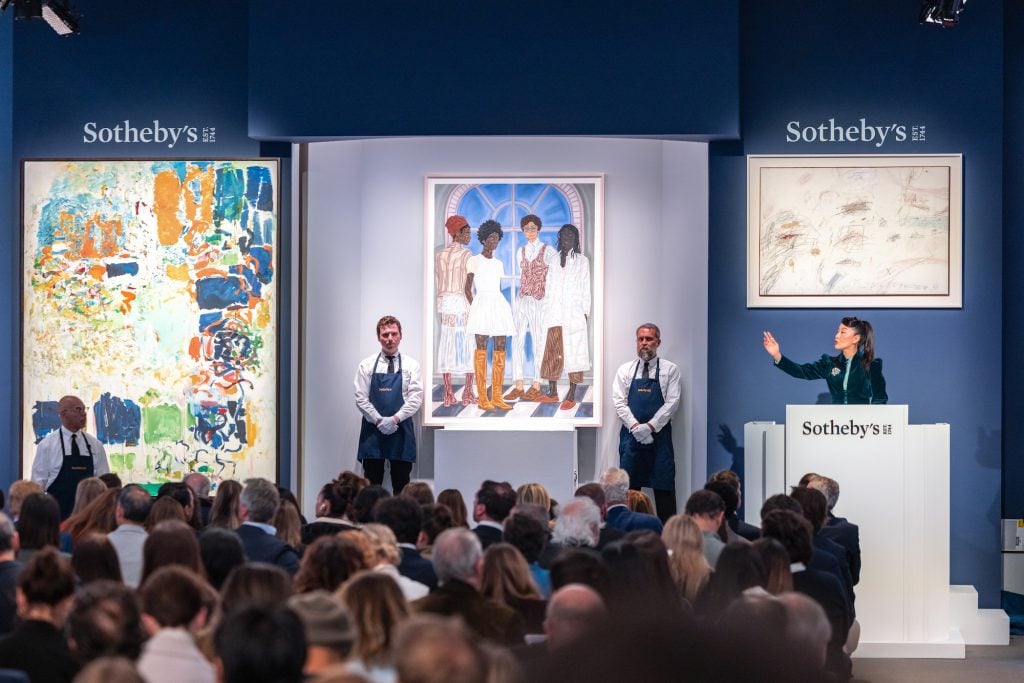
A much-touted Francis Bacon sold for a below-estimate $27.7 million, and there was one big withdrawal, but there were also bright spots.

Eileen Kinsella

On Monday evening, Sotheby’s kicked off the big-ticket May auctions in New York with a pair of solid, but not spectacular, sales of contemporary art.
Its salesroom on Manhattan’s Upper East Side was packed in the lead-up to the 6:30 p.m. start, but even though champagne was flowing and passed hors d’oeuvres were abundant, the atmosphere was notably subdued. Much of the conversation concerned the recent hack of Christie’s website and the overwhelming sense of caution in the market.
First up was “The Now,” which focuses on so-called “ultra-contemporary” material. It realized $32.7 million across 17 lots, squarely within its revised estimate of $24 million to $34.6 million. (Final prices reflect premiums while presale estimates do not). The lowered estimate reflected the withdrawal, right before the sale’s start, of one of its star lots, a Cecily Brown painting with an estimate of $6 million to $8 million. Since it had a direct guarantee from Sotheby’s, it was presumably the house itself, and not a nervous consignor, that decided to pull it. (The sale’s original estimate was $30.2 million to $42.6 million.)
Despite that notable retreat, some in attendance were upbeat. “Given the shaky world out there, Sotheby’s did the work and for the most part achieved respectable results,” private dealer Andrew Terner said after the auction.
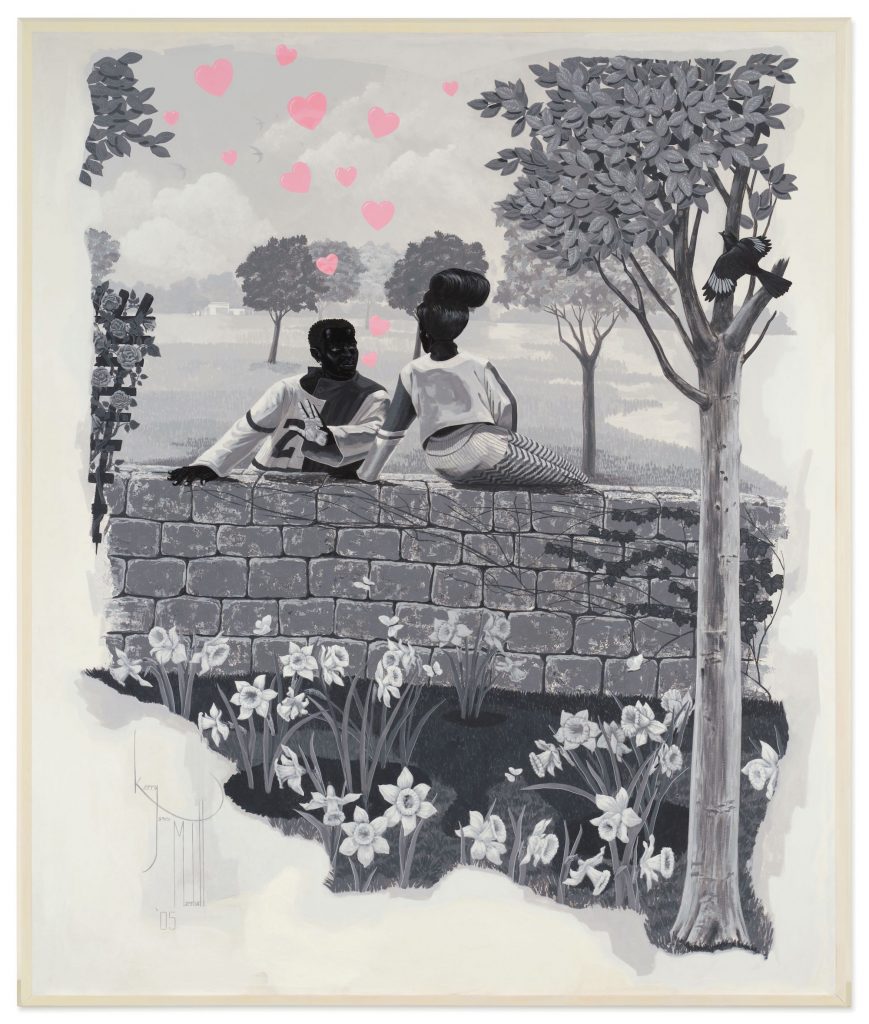
Kerry James Marshall, Vignette #6 (2005). Courtesy of Sotheby’s.
Bidding was uneven. Some works drew fervent competition, while others sold quickly around their low estimates. A prime example of the latter was Kerry James Marshall’s Vignette #6 (2005), which was priced at $7 million to $10 million and backed by an irrevocable bid, meaning it was guaranteed to sell. Auctioneer Phyllis Kao opened the lot at $6 million, and the work quickly sold at a hammer price of $6.5 million to Sotheby’s specialist David Galperin, who was bidding for a client, presumably that third-party guarantor. They paid a premium-inclusive price of $7.4 million.
It was quite a different story several lots later, when Kao opened bidding for a vibrant large-scale painting by the highly sought-after abstract artist Lucy Bull at $400,000, versus an estimate of $500,000 to $700,000. The 2020 piece, 16:10, quickly shot up, with numerous bidders still in the running at $850,000. “Everyone gets a turn,” Kao said, as she took bids from one person after another.
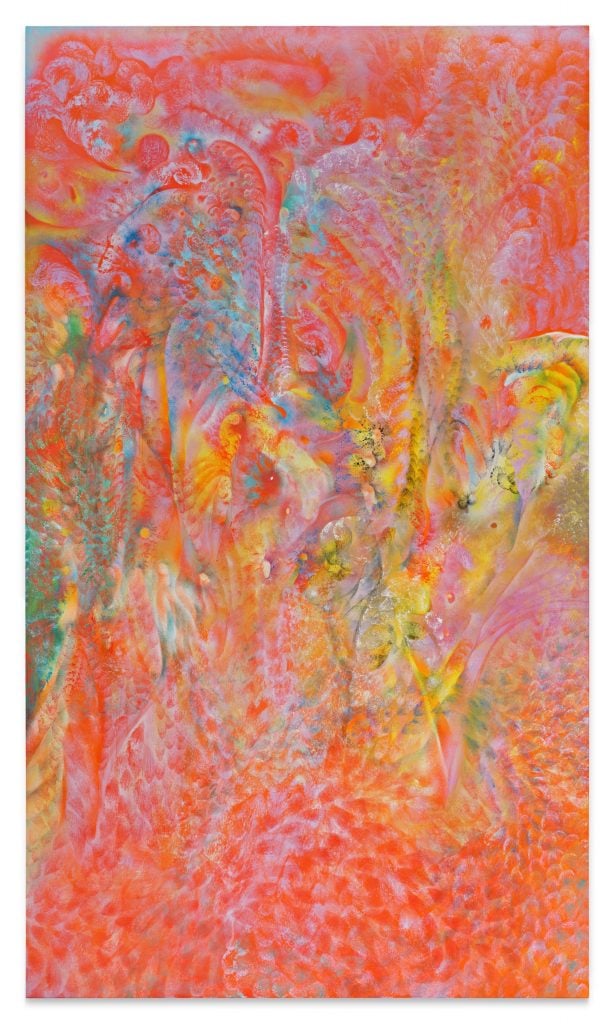
Lucy Bull, 16:10 (2020). Courtesy of Sotheby’s.
The Bull finally sold for $1.8 million with premium, a new auction record for the artist, just barely: her previous high mark was $1.76 million.
And the night was not a complete wash for Cecily Brown’s market. Her big withdrawal aside, another painting by the artist, Functor Hideaway (2008), was the second-highest result of the sale, going for $3.6 million.
Of the 17 lots offered in “The Now,” all but one sold. Given the tremendous buzz around artist Jeffrey Gibson, who is representing the United States at this year’s Venice Biennale, it was surprising to watch the bidding for his sculpture Always After Now (2014) run out of steam below its $150,000 low estimate.
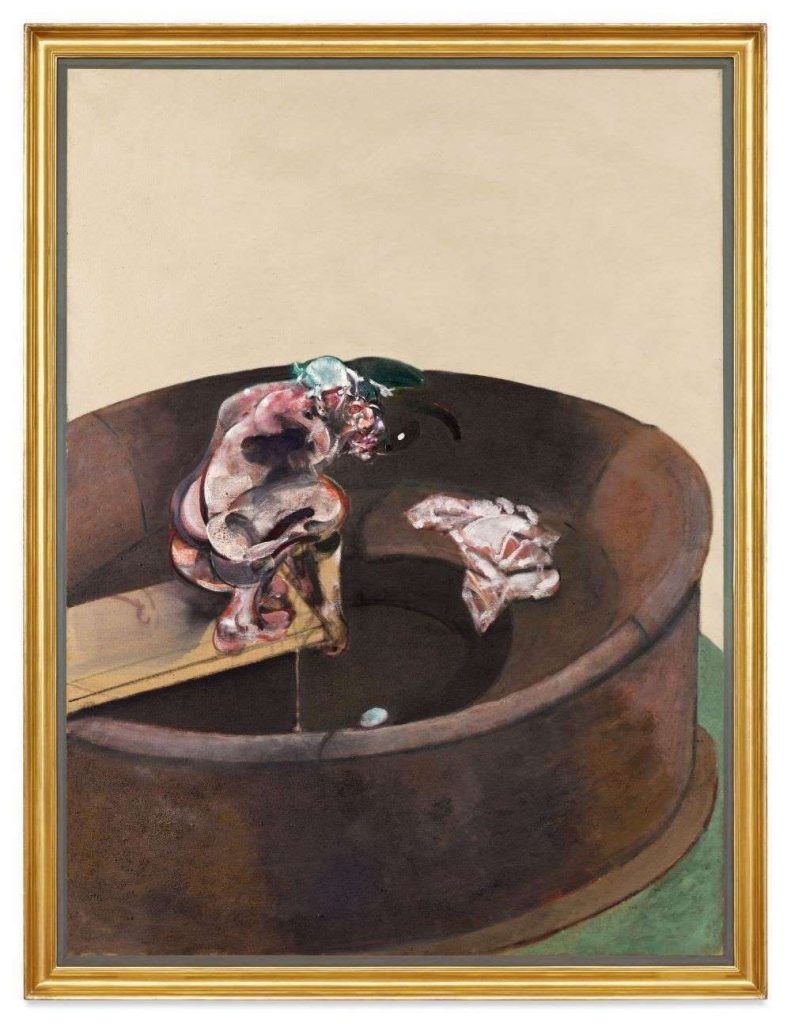
Francis Bacon, Portrait of George Dyer Crouching (1966). Courtesy of Sotheby’s.
The evening’s main contemporary section achieved $234.6 million, at the low end of its $217.6 million-to-$316 million low estimate. That result, across 35 lots, brought the night’s total to $267.3 million.
Once again, bidding was discerning. The expected highlight was Francis Bacon’s Portrait of George Dyer Crouching (1966), which carried a third-party guarantee and an estimate of $30 million to $50 million. But those figures proved to be overly ambitious. Auctioneer Oliver Barker started bidding at $22 million, and it hammered at $24.5 million to a phone bidder, presumably the third-party backer. (With fees, the final price was $27.7 million.)
Also underperforming was Richard Diebenkorn’s Ocean Park #126 (1984). Carrying a low estimate of $18 million, it stalled out, after lackluster bidding, at just under $15 million, going unsold.
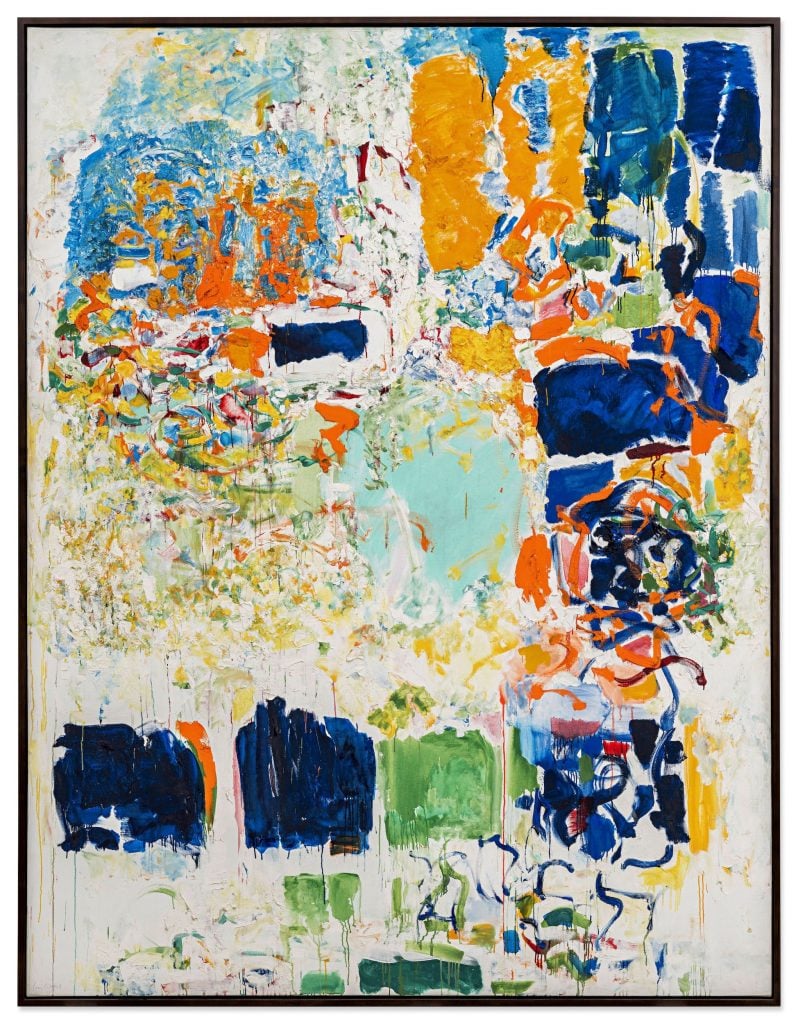
Joan Mitchell, Noon (1969). Courtesy of Sotheby’s.
Four Joan Mitchell abstract paintings from a private collection fared better. The star of the quartet was the massive Noon (1969), which went for $22.6 million, besting its $20 million estimate with premium. Together, the Mitchells achieved $45.2 million, well above their combined low estimate of $37 million.
Another high-profile lot doing well was a bright yellow egg-shaped painting by Lucio Fontana, Concetto spaziale, La fine di Dio (1964), which was consigned by the revered Dallas collectors Howard and Cindy Rachofsky.
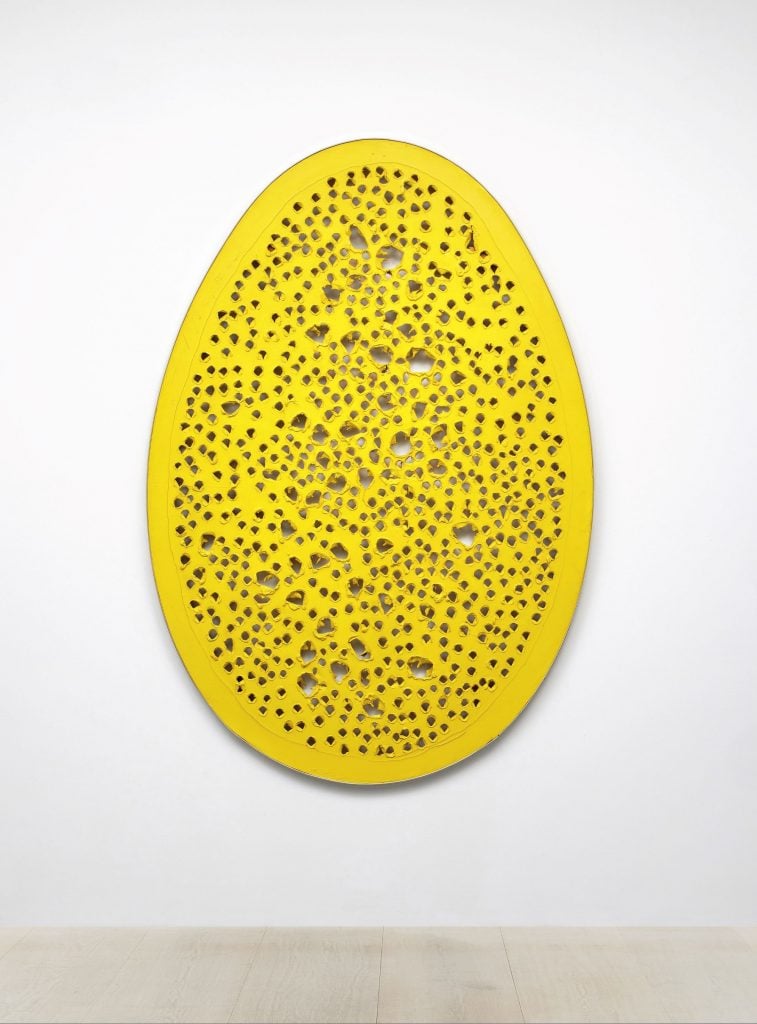
Lucio Fontana, Concetto spazaiale, La fine di Dio (1964). Courtesy of Sotheby’s.
The piece was estimated at $20 million to $30 million, and auctioneer Oliver Barker opened the action at around $17 million. He proceeded to coax a few bids to get it to a hammer of $19.7 million from a buyer seated in the room. With premium, the final price was a within-estimate result of just under $23 million—proving that, sometimes, a little persuasion can go a long way.